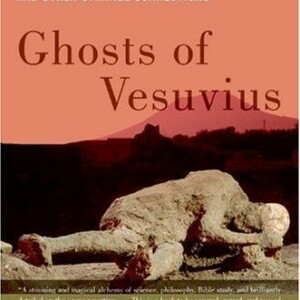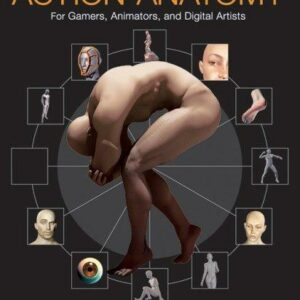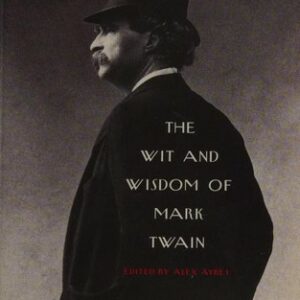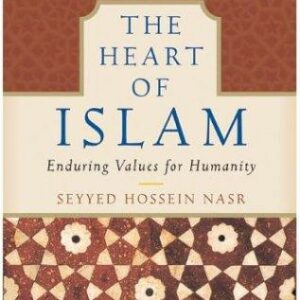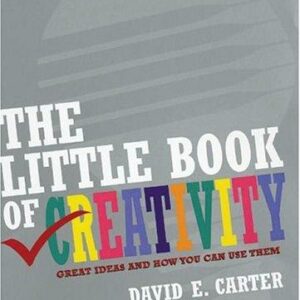Comanches
$19.95
| Title | Range | Discount |
|---|---|---|
| Trade Discount | 5 + | 25% |
- Description
- Additional information
Description
Authoritative and immediate, this is the classic account of the most powerful of the American Indian tribes. T.R. Fehrenbach traces the Comanches’ rise to power, from their prehistoric origins to their domination of the high plains for more than a century until their demise in the face of Anglo-American expansion.
Master horseback riders who lived in teepees and hunted bison, the Comanches were stunning orators, disciplined warriors, and the finest makers of arrows. They lived by a strict legal code and worshipped within a cosmology of magic. As he portrays the Comanche lifestyle, Fehrenbach re-creates their doomed battle against European encroachment. While they destroyed the Spanish dream of colonizing North America and blocked the French advance into the Southwest, the Comanches ultimately fell before the Texas Rangers and the U.S. Army in the great raids and battles of the mid-nineteenth century. This is a classic American story, vividly and poignantly told.“For a complete history of the Comanches, this book probably has no equal.” –Dee Brown, author of Bury My Heart at Wounded Knee
“This is a very good book. Like virtually all good books about the American Indian, it tells a tragic story, but unlike many of them, it tells it well. The author has mastered an extensive and complex subject: he is flexible, well-organized, and sensitive.” –Larry McMurtry
“Fehrenbach is a highly interpretive and original writer, whose work rests on solid scholarship. His book ranges grandly across the disciplines from folklore to anthropology to history.” –Southwestern Historical QuarterlyT.R. Fehrenbach was born in San Benito, Texas in 1925 and graduated from Princeton University in 1947. He was a contributor to many publications, including Esquire, The Atlantic, The Saturday Evening Post, and The New Republic. He is the author of the best-selling Lone Star: A History of Texas and the Texans and Fire and Blood: A History of Mexico, among other works. He passed away in 2013, at the age of 88.1
THE AMERINDIANS
As far back as history can scrutinize, man’s intellectual and spiritual potentialities have not changed. –J. Frank Dobie
THOUSANDS OF YEARS AGO, NOT LONG AFTER MEN BEGAN FORGING INTO a still subarctic Europe out of central Asia, other men marched east on an incredible trek into the Americas.
The origin of man on earth is still a mystery, and what physical and psychic circuitry was imprinted on man by his long evolution on this planet is far from scientifically established. No one knows where or when Homo sapiens, man in his present form, appeared or how he became separated into subspecies or races and diffused across the globe. The evidence of old bones suggests that the game-rich savannas of Ice Age Africa were the human birthplace, but the evidence is fragmentary and not decisive. Whether Homo sapiens evolved once in a single region, or whether there were parallel evolutions of protohuman stocks in several places–thus accounting for distinctive racial differences–is not clear. One thing does seem to be clear, however: man did not originate in the New World.
No evidence has ever been found of the remains of high apes, hominids, or half-men such as the Neanderthals in the Americas. The oldest manlike relicts in the Western Hemisphere are perfectly human, and they show that the creatures who scattered them had both tools and fire. The most ancient human skulls unearthed from American limestone are distinctly those of Homo sapiens, men and women whose physical characteristics and, presumably, mental potential were not markedly different from present-day man. Other things about these bones and long-extinguished campfires are clear–they seem to have been left by a dolichocephalic or longheaded race with heavy jaws and flat, curved leg bones, perhaps an early Australoid or proto-Caucasoid people. This race, which hunted the hairy monsters of the last Ice Age, the woolly mammoth, the giant sloth, and the great mastodon on the High Plains, was in North America at least fifteen thousand years ago. It either vanished with the massive Pleistocene animals it lived on, owing to dramatic climatic changes as the glacial ice retreated north, or else it was exterminated or absorbed by newer waves of invaders out of Asia.
But all men entered the Americas as invaders, and as true men: erect, gregarious, possessing a basic technology of weapons, tools, and fire, with speech and symbolism. These invaders almost certainly came from Asia, perhaps out of the Altai, over a land bridge that rose between Siberia and Alaska when so much of the world’s surface water was trapped in shining ice. Even at the worst of the last Ice Age, this land route was passable by people on foot; the southern shores were ice-free and there were always a few unglaciated corridors leading south. Small streams of human beings, wearing animal skins and furs and carrying their infants and flint-tipped spears, trekked across the land bridge for several millennia before it sank again into the icy Bering Strait. Some stayed in the gloomy northland; others scattered across the immensity of the North American continent until they reached the ocean; others pushed their way through the cordilleras and the rain forests of Middle America and their campfires burned in the rare, chill air of the Andes. This invasion must have begun between 10,000 and 7000 B.C.; by 5000 B.C. it was in full swing–a great Volkerwanderung that still had not ended when European explorers burst upon America.
The race that appropriated what was then a manless, primordial wilderness was a small, tough, dark, almost incredibly hardy breed. It came equipped to conquer the continents for humankind, with its knowledge of fire, its flint spears and picks, axes, pipes, and drills made out of stone or animal bone. It brought domesticated dogs and, probably, the bow and arrow in the last migrations out of Asia. But even these tough, persistent travelers who braved Siberian ice were at the mercy of the American environment. This was a hunting people, who ate seeds and fruits and roots and berries when they could find them but mainly lived on fresh meat. Their life was the endless pursuit and slaughter of other living creatures. Such men could reap little beyond immediate subsistence from the earth and they must be forever on the move, since even their tiny numbers and crude weaponry soon exhausted or frightened off the game upon which they lived.
Still, gripping their bows and spears, shivering in their crudely fashioned animal skins, carrying their helpless infants on their backs, living in caves and brush arbors according to the season, gorging on bloody, half-charred flesh or going hungry when the hunters failed, spanning only a short, brutish existence that probably only rarely lasted thirty years, these wanderers were human–as fully human as any men and women alive today. Forced into cunning and cultural plasticity by their physical limitations and by their prolonged infancy and childhood, which separated man from the other Pleistocene creatures, they had begun to think and plan and organize, to learn painful lessons, and to pass the acquired knowledge across the generations. They were blood-banded, the hunting ten-groups with trains of females and infants, already aware of the need for interband cooperation and the dread necessity of the oldest human taboo, the prohibition of incest. They were already a genetically select species with at least a million years of biological and cultural development behind them. They had not marched innocent out of Eden: they were man the hunter, man the killer, then and now the most dangerous and formidable creature ever to appear on a four-billion-year-old earth.
Grubbing, hunting, killing, feasting, mating, dying and giving birth, exulting in the new moon of spring, browning under the harsh wind and brazen summer sun, moaning beneath the hungry winter snows, they were different from modern man only in circumstance. Their knowledge of the world and their acquired artifacts were primitive, but their human culture was already enormously complex–far more complete and complex than civilized men thought even a hundred years ago. The structures of their bodies and minds were already permanently shaped into the human form. They knew hope, fear, ecstasy, love, disillusion, and despair, and occasionally they found time for wonder. They were not free creatures: they were hounded by a hundred dark dreads and fearful taboos. They sensed mystery in their existence and in the universe and they tried desperately to find some meaning in it all; they strove to see and understand the cosmic forces that ruled the physical world so that they might bend them to their needs and wishes, the basis of all human religion. Their speech was already highly symbolic and complex, far richer in conception than scholars once believed. The evidence of primitive North American languages, which apparently passed unchanged through millennia of Stone Age existence into modern times, shows that the earliest Americans could express, sometimes clumsily but more often in symbols of singing beauty, almost any concept or thought or feeling expressed by modern man. Then as now the fundamental things applied: the pain of birth and death, the joy of mating, the instinct of motherhood, the thrill of the chase, the exultation of the kill, the hunger for security. Their basic consciousness was not fundamentally different from the basic consciousness of any other men. Seeing the sun rise, the moon set, the red fire throw giant black shadows on their cavern walls, at bay or in exaltation, these men and women felt the same things felt by modern man. In the truest sense–against the earth clock–they were modern men.
They entered America and survived.
This people was Mongoloid, as the human species is presently subclassified. They were Mongoloid or Asian by skin shade, head shape, hair and eye color, and form. Thousands of years after the last migration, the infants of this race were still born with the characteristic Mongoloid eye fold, though in many adults this tended to disappear. The people, however, did change somewhat in the New World because of changed environment, and because of long inbreeding in small, isolated groups.
Predatory man traveled in small bands, and the bands arrived in America widely separated by time and distance. Although all human beings had long since learned the genetic horrors of incest, circumstance still forced Stone Age hunters to inbreeding. Among the isolated groups of hunters in America the mating of first cousins was a norm. This, and certainly climatic or environmental factors, caused the emigrants from Asia to change from the peoples they left behind, and also to vary slightly among themselves from region to region and band to kinship band in height, in skin pigmentation, and in facial features. Some were short, others grew quite tall; some had round faces and others aquiline; and skin shades varied from yellowish to deep brown, with a reddish copper tone predominating throughout North America. All retained the dark hair and eyes, the deep chests and bandy, almost delicate legs, and the relatively hairless bodies of their Mongolian ancestry. Collectively they formed a new race, a new subspecies in the New World.
Columbus, thinking he had reached the Orient in 1492, called this people indios or Indians. Other Spaniards described them as colorados or red men. They entered history as American Indians, or Amerindians. In their tongues they were never anything but men, or people, or human beings.
The Amerindians survived and prevailed in the Americas. But whatever face is put on it, the Americas did not prove a hospitable region for the advancement of primitive mankind. The reasons were not completely geographical, since the hemisphere held every kind of climate and region. Nor is there any indication that there was some limitation in the race itself. All men seem to have the same potentialities, and all men have struggled equally valiantly against their environments. The Amerindians were tough and valiant and intelligent, but they were probably robbed of their full potential by a combination of circumstances.
The nature of the American invasion was not auspicious. A very small number of human beings entered the Americas in widely scattered, predatory bands. They crossed the continents by myriad routes. The same isolation that caused inbreeding and minor physical differences among Amerindians created something vastly more important. Life was too hard for Stone Age man for weak physical characteristics to survive, but there was a vast cultural inbreeding among the separate bands and tribes, which resulted over millennia in an almost fantastic cultural splintering. By the time of the birth of Christ there was more cultural differentiation among the Amerindians than among human beings descended from a common stock anywhere else on earth. The Amerindians had evolved into hundreds, perhaps thousands, of distinct and separate peoples.
Once the land bridge sank into the Bering Strait, the Amerindians were cut off from the major currents and cultural diffusions that swept periodically over the unitary Eurasian continent–but for crucial ages they also remained isolated from each other in the wooded vastnesses of the American land masses. They were separated from the Old World and from each other until at last the struggling bands had grown into clans, and the strengthened clans into tribes, and the larger tribes into primitive confederacies that once again came into close contact with neighboring peoples. Unlimited territorial space did not free the Amerindians in the broadest sense; it wreaked something rather terrible upon them. Space and mobility sparked countless forms of experimentation within the limitations of a Stone Age technology; but these hardened into frozen cultural patterns. Some of these differences were essentially meaningless, such as the fact that some peoples cut arrow shafts with two grooves, others with three or four. But many of them were fundamental, striking to the heart of human behavior in moral codes, taboos, and kinship and sexual practices. Most Amerindian peoples created utterly different ways of recognizing kinship, different laws, and different social orders. Inevitably, the taboos of one tribe sometimes became the imperatives of another and the cherished customs of one people anathema to another. For centuries the cultural, like the genetic base, was cribbed and confined; then, when at last the peoples of the Americas numbered in the millions and impinged upon each other and strong cultural diffusions might have taken place, it was too late.
No human beings can be quite so culturally conservative as those living close to the survival level, always on the thin edge of ethnic extinction. While the Amerindians tended to be gregarious, they were also ethnocentric. Every people believed its own ways were best. Each was convinced its own customs and laws were more "natural" and "human."
One evidence of the fantastic cultural separation of the Amerindian invaders was the near-improbable splintering of language that occurred among them. Their tongues underwent a shattering proliferation, in marked contrast to what occurred in Eurasia: All the ancient and modern tongues of Europe, with the exception of the Finnish-Magyar enclaves, stem from a common Indo-European root, and carry through the centuries certain basic psychic unities and world-views. Greek, Latin, German, and Russian, though mutually unintelligible even in prehistoric times, form one great linguistic stock. The Amerindians, however, had devised at least 140 such stocks when Europeans found them living side by side, and all of these language groups apparently developed independently, with no two of them having a common root. They shared no common word for "father" or "mother"; each had entirely different sounds and structures. And within the great stocks, such as Uto-Aztekan, Siouan, Caddoan, Algonquian, and others, there were hundreds of distinct dialects. The vast migrations of the Amerindian Völkerwanderung also muddied the linguistic map. Enclaves were thrust in with enclaves; Athapaskan speakers were surrounded by Uto-Aztekans, and Uto-Aztekan-speaking peoples imposed on older stocks. The Shoshone dialects of the Great Western Basin were akin to the Nahuatl of the Toltec artisans of Mexico, but the Utes, Paiutes, and Shoshone of the Rocky Mountain system had lost all cultural contact with their onetime kinsmen who migrated south and formed the seven Nahua-speaking tribes of ancient Mexico. All told, the Amerindians spoke thousands of different languages and dialects. The situation in Europe would have been analogous to that in America only if tribes speaking Latin, Hittite, Aramaic, Egyptian, Gaelic, German, and Chinese had all settled side by side and maintained their cultural identity within the confines of medieval France.
When the Europeans arrived in the Americas, they, like each Amerindian tribe, were convinced that all human behavior had evolved along certain "natural" lines in obedience to "natural" laws. Their philosophy and religion taught this. When Western values were called into question and proved parochial, the tendency then became one of searching for earlier, perhaps biological but still universal, patterns imprinted onto all mankind. But natural behavior, among Amerindians, was natural only within the confines of one people or tribe. Some tribes were matrilineal, i.e., tracing blood descent through the mother, the oldest way; most had become patrilineal like the Indo-Europeans. Basic sexual practices varied widely from tribe to tribe. Some peoples shared females among siblings; some were totally promiscuous. Among other tribes, even the notion of such behavior led to bloodshed. The Amerindian peoples were as culturally diverse, even on similar material levels, as English and Chinese, or Nigerians and Danes.US
Additional information
| Weight | 17 oz |
|---|---|
| Dimensions | 1.3600 × 5.1900 × 7.9400 in |
| Imprint | |
| Format | |
| ISBN-13 | |
| ISBN-10 | |
| Author | |
| Audience | |
| BISAC | |
| Subjects | native american myths and legends, christmas gift for grandma, robin wall kimmerer, navajo books, comanche, comanche indians, comanches the history of a people by t.r. fehrenbach, Comanches, lone star, racial and ethnic groups, wounded knee, indians, indian books, native american history, native american books, history, history lovers gifts, history buff gifts, historical books, gifts for history buffs, history books for adults, SOC005000, american indians, SOC002010, native americans, history books, Native American, folklore, historical |



